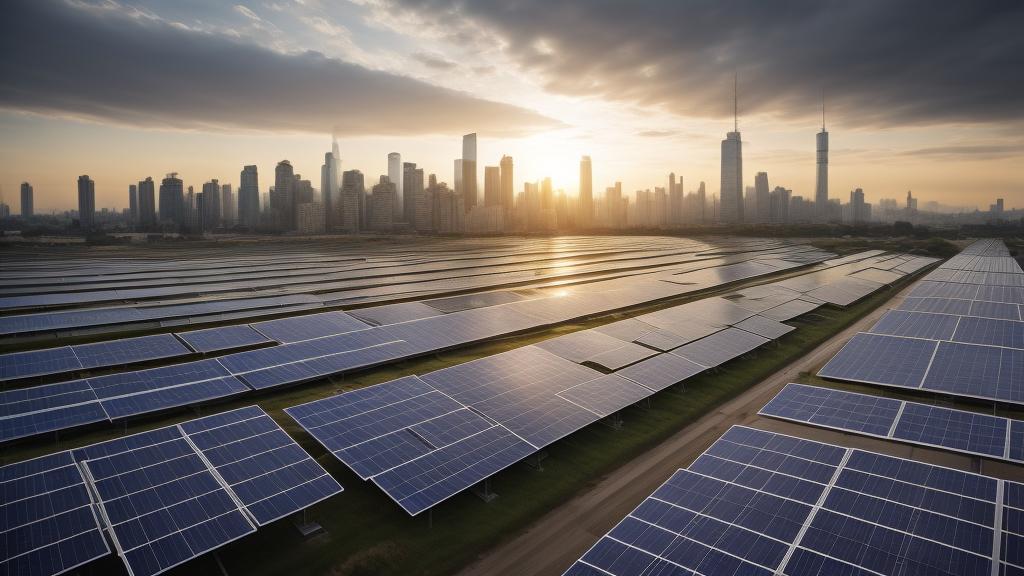In the heart of bustling cities, an energy revolution is quietly taking place. Urban solar farms, nestled atop skyscrapers and residential buildings, are transforming the way we think about renewable energy and city planning.
Traditional power plants, often located on the outskirts of urban areas, have long been the backbone of our energy supply. However, as cities grapple with increasing energy demands and the pressing need for sustainability, a more localized and environmentally friendly solution is gaining momentum: urban solar farms.
The concept is simple yet revolutionary. By utilizing the vast expanse of rooftops in densely populated areas, solar panels can be installed to generate clean energy right where it's needed most. This approach not only reduces transmission losses associated with long-distance power lines but also alleviates the strain on centralized power grids.
One of the key benefits of urban solar farms is their ability to make use of unused or underutilized spaces. Rooftops, often overlooked in urban planning, become valuable assets in the quest for sustainable energy. Cities like New York, London, and Tokyo are leading the charge, with innovative policies and incentives that encourage property owners to invest in rooftop solar installations.
In New York City, for instance, the 'Solarize NYC' initiative has been instrumental in driving the adoption of rooftop solar. This community-driven program offers residents and businesses the opportunity to pool their resources and negotiate lower installation costs. The result has been a significant increase in solar panel installations on both residential and commercial buildings.
Meanwhile, in London, the 'Mayor's Solar Action Plan' aims to bring solar energy to the forefront of the city's climate strategy. The plan includes ambitious targets to install solar panels on more than 100,000 rooftops by 2030, with a focus on public buildings, social housing, and commercial properties.
Tokyo, a city known for its innovation and forward-thinking policies, has also embraced the concept of urban solar farms. The Tokyo Metropolitan Government has introduced subsidies and tax breaks to encourage the adoption of rooftop solar, with a goal of generating 1 GW of solar power by 2024.
The environmental benefits of urban solar farms are undeniable. By harnessing the power of the sun, cities can significantly reduce their carbon footprint and reliance on fossil fuels. Additionally, the decentralized nature of rooftop solar installations enhances energy resilience, making cities less vulnerable to power outages and ensuring a more stable and reliable energy supply.
Economic advantages are also at play. Urban solar farms create local jobs, from manufacturing and installation to maintenance and monitoring. They also provide property owners with an opportunity to generate additional income through the sale of excess energy back to the grid or via energy-sharing platforms.
However, the transition to urban solar farms is not without challenges. High upfront costs, regulatory hurdles, and technical barriers can impede progress. To address these issues, collaboration between governments, private enterprises, and local communities is crucial.
Public-private partnerships have emerged as a successful model for overcoming these obstacles. By combining the resources and expertise of both sectors, these partnerships can streamline the permitting process, provide financial incentives, and develop innovative financing mechanisms that lower the cost of entry for property owners.
Moreover, advancements in solar technology are making urban solar farms more viable and efficient. Innovations such as lightweight and flexible solar panels, building-integrated photovoltaics (BIPV), and energy storage solutions are paving the way for a new era of urban energy generation.
As cities continue to grow and evolve, the importance of sustainable energy solutions cannot be overstated. Urban solar farms represent a bold and visionary approach to meeting the energy needs of the future while addressing the urgent environmental challenges of our time. By harnessing the power of urban rooftops, we can build cleaner, greener, and more resilient cities for generations to come.
Harnessing the power of urban rooftops: the rise of urban solar farms

